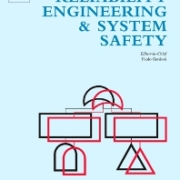Research paper accepted by Knowledge-Based Systems
Principled quantification of predictive uncertainty in neural networks (NNs) is essential to safeguard their applications in high-stakes decision settings. In this paper, we develop a differentiable mathematical formulation to quantify the uncertainty in NN prediction using prediction intervals (PIs). The formulated optimization problem is differentiable and compatible with the built-in gradient descent optimizers in prevailing deep learning platforms, and two performance metrics composed of prediction interval coverage probability (PICP) and mean prediction interval width (MPIW) are considered in the construction of PIs. Different from existing methods, the developed methodology features four salient characteristics. Firstly, we design two distance-based functions that are differentiable to impose constraints associated with the target coverage in PI construction, where PICP is prioritized explicitly over MPIW in the devised composite loss function. Next, we adopt a shared-bottom NN architecture with intermediate layers to separate the learning of shared and task-specific feature representations along the construction of lower and upper bounds. Thirdly, we leverage the projection of conflicting gradients (PCGrad) to mitigate interference of gradients associated with the two individual learning tasks so as to increase the convergence stability and solution quality. Finally, we design a customized early stopping mechanism to monitor PICP and MPIW simultaneously for the purpose of selecting the set of parameters that not only meets the target coverage but also has a minimal MPIW as the ultimate NN parameters. A broad range of datasets are used to rigorously examine the performance of the developed methodology. Computational results suggest that the developed method significantly outperforms the classic LUBE method across the nine datasets by reducing the PI width by 31.26% on average. More importantly, it achieves competitive results compared to the other three state-of-the-art methods by outperforming them on four out of ten datasets. An ablation study is used to explicitly demonstrate the benefit of shared-bottom NN architecture in the construction of PIs.
Research paper accepted by Reliability Engineering and Systems Safety
Physics-Informed Neural Network (PINN) is a special type of deep learning model that encodes physical laws in the form of partial differential equations as a regularization term in the loss function of neural network. In this paper, we develop a principled uncertainty quantification approach to characterize the model uncertainty of PINN, and the estimated uncertainty is then exploited as an instructive indicator to identify collocation points where PINN produces a large prediction error. To this end, this paper seamlessly integrates spectral-normalized neural Gaussian process (SNGP) into PINN for principled and accurate uncertainty quantification. In the first step, we apply spectral normalization on the weight matrices of hidden layers in the PINN to make the data transformation from input space to the latent space distance-preserving. Next, the dense output layer of PINN is replaced with a Gaussian process to make the quantified uncertainty distance-sensitive. Afterwards, to examine the performance of different UQ approaches, we define several performance metrics tailored to PINN for assessing distance awareness in the measured uncertainty and the uncertainty-informed error detection capability. Finally, we employ three representative physical problems to verify the effectiveness of the proposed method in uncertainty quantification of PINN and compare the developed approach with Monte Carlo (MC) dropout using the developed performance metrics. Computational results suggest that the proposed approach exhibits a superior performance in improving the prediction accuracy of PINN and the estimated uncertainty serves as an informative indicator to detect PINN’s prediction failures.
Research paper accepted by IEEE Transactions on Instrumentation and Measurement
Deep learning has achieved remarkable success in the field of bearing fault diagnosis. However, this success comes with larger models and more complex computations, which cannot be transferred into industrial fields requiring models to be of high speed, strong portability, and low power consumption. In this paper, we propose a lightweight and deployable model for bearing fault diagnosis, referred to as BearingPGA-Net, to address these challenges. Firstly, aided by a well-trained large model, we train BearingPGA-Net via decoupled knowledge distillation. Despite its small size, our model demonstrates excellent fault diagnosis performance compared to other lightweight state-of-the-art methods. Secondly, we design an FPGA acceleration scheme for BearingPGA-Net using Verilog. This scheme involves the customized quantization and designing programmable logic gates for each layer of BearingPGA-Net on the FPGA, with an emphasis on parallel computing and module reuse to enhance the computational speed. To the best of our knowledge, this is the first instance of deploying a CNN-based bearing fault diagnosis model on an FPGA. Experimental results reveal that our deployment scheme achieves over 200 times faster diagnosis speed compared to CPU, while achieving a lower-than-0.4% performance drop in terms of F1, Recall, and Precision score on our independently-collected bearing dataset. Our code is available at https://github.com/asdvfghg/BearingPGA-Net.




